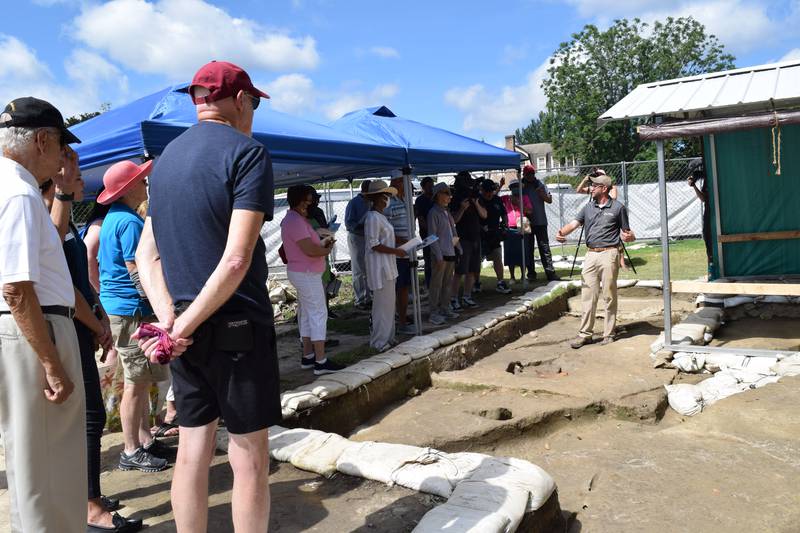Graves at Williamsburg’s First Baptist Church Will Be Excavated
Descendants, archaeologists and researchers alike gathered Monday for the long-awaited beginning of burial excavations at the original First Baptist Church site.

The First Baptist Church descendant community unanimously voted in March to begin excavating three grave shafts in order to learn the race, age, sex and anything else about the people buried on the site. Since archaeologists began digging in September 2020, the original foundation of the church, a structure dating to 1865 and 41 graves have been identified.
Members of several congregations who are descendants of early Williamsburg residents gathered to view the opening of the graves. The ancestral blessing ceremony that was performed before the work began included a mix of prayers and song — a solemn and moving moment, said Connie Matthews Harshaw, president of the Let Freedom Ring Foundation. The group has been working since 2018 to preserve the church, its history and artefacts that date to the 18th century.
“My heart is full. It was a moving tribute this morning. The day was all about the descendants,” Harshaw said. “We wanted the descendants to have an opportunity to voice what their ancestors may be thinking or saying.”
The 41 burial sites, which are rectangular holes about two feet wide and five feet deep, have been primarily identified because of their surface appearance, according to The Colonial Williamsburg Foundation. One of the chosen graves was marked by an upside-down wine bottle, making it the only marked grave identified so far.
The process will take about two months. It will include confirming the presence of human remains, determining how long they’ve been there and assessing if the conditions permit further testing. If conditions allow, osteological and DNA testing will be done on the remains.
DNA testing will determine the eye colour, skin tone, propensity for certain diseases or conditions, genetic ancestry and biological connections of the person.
The osteological analysis can fill in some gaps of the DNA testing by examining the bones — age at death, stature, injuries, illnesses, physical stresses, quality of life and place of origin.
The DNA testing will require two samples from each subject and removing bone for that testing. The bones will then be fully excavated and moved to the Institute for Historical Biology on William & Mary’s campus for cleaning and analysis. Any artefacts found in the graves will be cleaned and catalogued in Colonial Williamsburg’s archaeological library.
The osteological and DNA analyses will take six months to a year. After the testing is done, all remains and artefacts will be reinterred in the original site. Then finally, hopefully, the descendants will have their answers.

“It has to be heartening for the descendant community because if you think about it, these people have laid there for more than 66 years under a parking lot at first, unrecognized,” Harshaw said. “If you stand still in the moment and think about the fact that what this means for the descendant community and their involvement in this process, this is really an example for the nation to follow in what we call community archaeology.”
The testing will allow researchers to establish a connection between the buried and the First Baptist Church and possibly help descendants find their ancestors’ final burial place.
“Every step of this process has been descendant-driven. … It wasn’t a decision for [Colonial Williamsburg]. It was not a decision for Let Freedom Ring. It wasn’t a decision for the church,” Harshaw said.
“It was the descendant community that will drive what happens on this site, with this site, how it’s interpreted because that’s the right thing to do.”
